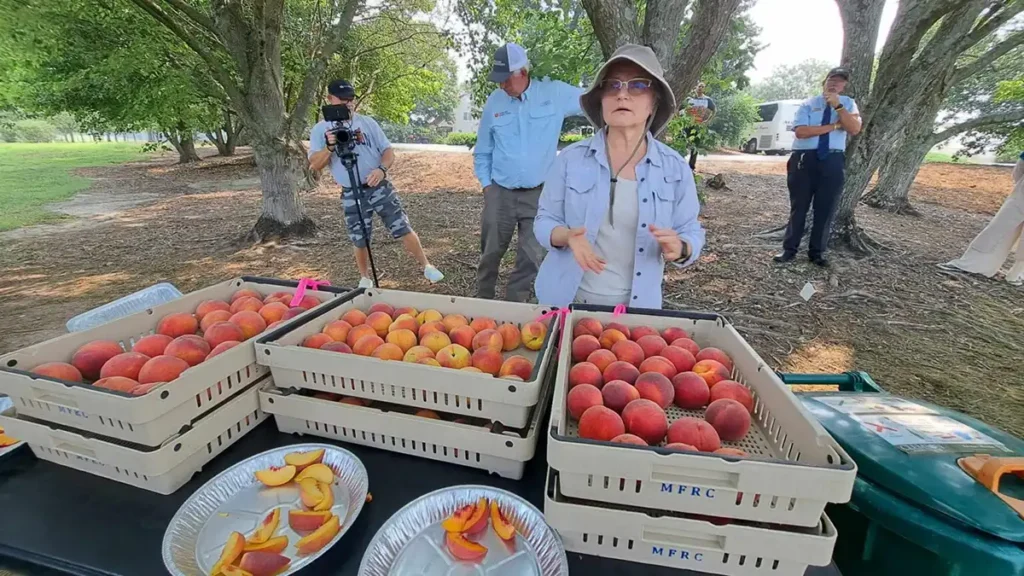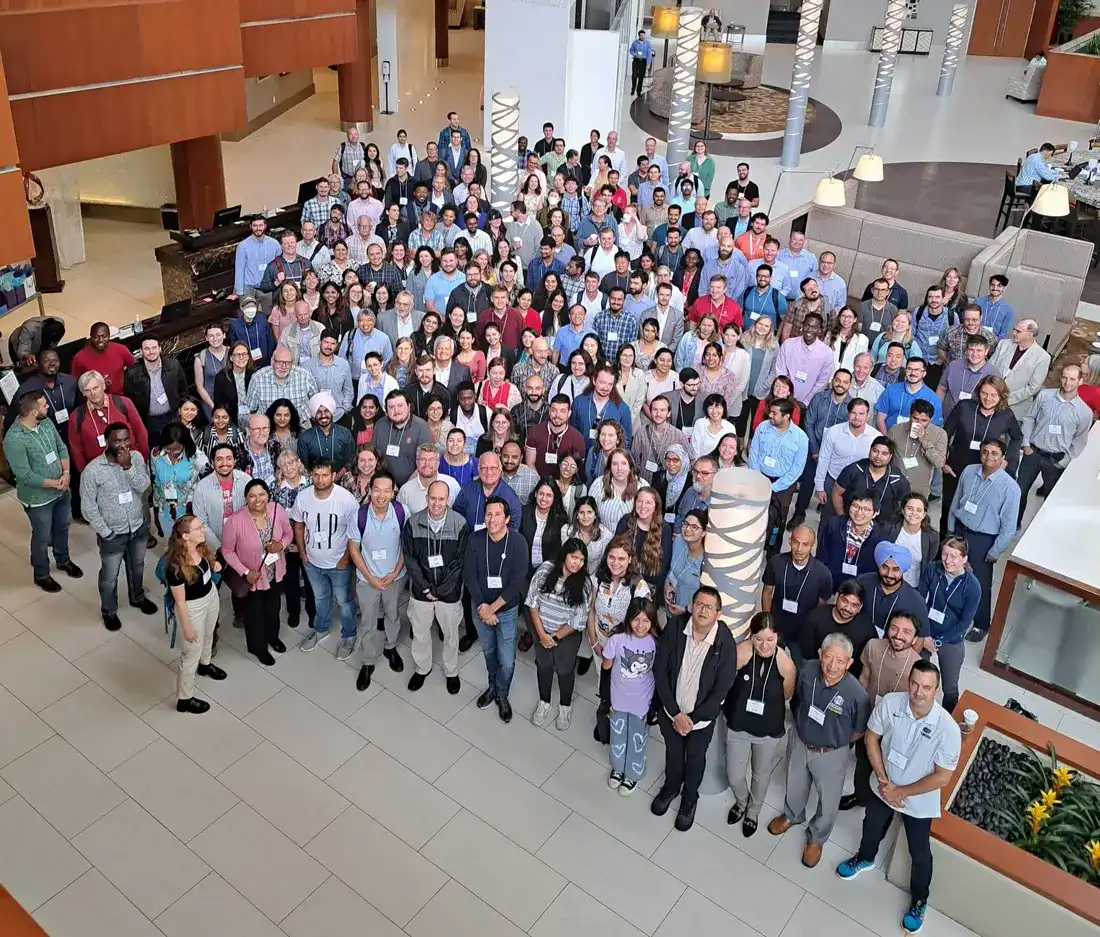Breed with affordability and versatility in mind, attendees of this year’s National Association of Plant Breeders meeting heard.
For Chef B.J. Dennis, culture is everything.
As a well-known chef who’s been featured on Netflix and is renowned for his culinary expertise, he’s made a career of blending the flavours and traditions of Gullah Geechee cuisine — food born of the descendants of West and Central Africans who were enslaved and brought to the Carolinas, Florida and Georgia to work on rice and cotton plantations.
With his cuisine, Dennis has made it his mission to introduce a fresh and unique taste to the continuously growing culinary diversity of the South.
He also brings a unique perspective to the world of plant breeding. With a focus on functionality and community impact, he knows the importance of considering the needs of local communities when developing new plant varieties. It’s a message he delivered to attendees of this year’s National Association of Plant Breeders (NAPB) annual conference, held in Greenville, South Carolina, in July.
What he believes needs attention is a shift towards community-driven seed initiatives, that emphasize traditional ingredients.
“Our culture has always had a connection to the land and agriculture, whether it’s the backyard gardens or the crops that have been part of our heritage for generations. It’s time to reclaim these practices and adapt them to our modern challenges,” he said.
When breeders embark on developing new plant varieties, they should strike a balance between novelty and functionality, along with cost efficiency and accessibility, as many chefs prioritize sourcing affordable and functional produce. Breeders should understand the demands of the market and create crops that can be grown and sold at reasonable prices, ensuring wider accessibility for consumers, he said.
Function over fancy, in other words.
Hanna Raskin—a Charleston, South Carolina-based journalist who publishes a popular newsletter called The Food Section, covering food and drink across the American South — has written extensively about the region’s food, restaurants, and culinary culture since 2006.
But she’s not used to taking the stage in front of hundreds of plants breeders, which she did in the opening talk at the conference. Clarifying the common misconception that food writing solely encompasses restaurant critiques, she quickly showed the audience that her knowledge of current food trends is vast, especially when it comes to food that consumers connect with, like beans.
Raskin has always been a bit captivated by the humble yet versatile legume. She envisions a future where beans extend their reach beyond mere culinary curiosities, becoming flavour powerhouses accessible to all.
“I’d love to see more work on beans. They’re super tasty and everyone can afford them,” she said.
Raskin acknowledges the importance of collaborations with entities such as the Clemson University research station in South Carolina. These partnerships have opened windows to a kaleidoscope of flavours, with watermelons assuming a prominent role in her explorations.
Watermelons, with their Southern roots intertwined with culture and tradition, become a living testament to the wonders of plant breeding, she says.
Watermelon has a history similar to Gullah Geechee cuisine, having been introduced to North America through the efforts of enslaved African people, who played a pivotal role in dispersing watermelon seeds across the eastern regions of the continent.
“It’s hard to deny that everyone loves watermelon; it’s always a hit. It’s probably on par with barbecue when it comes to popular food choices in the South,” Raskin said.
Raskin underlines the cardinal virtue of honouring consumer preferences and palates. She encourages plant breeders to delve into the boundless tapestry of taste; welcome the willingness of consumers to embrace novel flavours and textures.
“We’ve found that consumers will tolerate more than we think; people are braver and more adventurous than sometimes the industry believes.”

The Consumer Factor
Of course, consumers still do have their preferences, and nowhere is this more prevalent than in the peach industry, where huge amounts of work go into bringing the beloved fruit — native to China and first introduced to North America in the 1500s by Spanish monks — to consumer tables across the continent.
In 2008, Ksenija Gasic launched a pioneering peach breeding initiative at Clemson University, prompted by the lack of progress and challenges such as disease tolerance issues that were impeding the local industry’s growth. Through a partnership with industry, Gasic’s program aimed to ensure the sector’s future. The conference included a tour of the Clemson peach orchards, which Gasic was happy to provide considering she was one of the organizers of this year’s NAPB conference.
Adapting to the changing climate conditions that affected peach production, Gasic’s program aimed to develop disease resistant peach cultivars with reduced chilling requirements. While reduced chilling was explored to counteract the effects of climate change, challenges like late frosts led to the concept of the “climate resilience,” where bloom delay would be achieved by combination of reduced chilling and increased heat requirement coupled with fruitlet freeze tolerance allowing peaches to adjust to a changing environment.
This past January was the sixth warmest one on record, and if temperatures stay warm, the state’s peach crop could be seriously affected.
Gasic’s program is working on new varieties adapted to a changing climate, which are needed to ensure South Carolina can continue to ship over the 200 million pounds of peaches it grows every year. That’s more than three times the amount harvested in Georgia in a typical year.
But climate change isn ‘t the only challenge peaches have faced over the years. Peaches in South Carolina have been all but wiped out before.
Peach tree short life disease, caused by a destructive nematode, caused severe damage to the state’s peach trees in the 1980s and 1990s. The development of the Guardian¬¨ß rootstock, developed with the help of people like Clemson University horticulture professor Greg Reighard and researchers at the United States Department of Agriculture in Georgia, helped the industry recover from the damage and forge ahead.
Hard Work
It’s that kind of passion, perseverance and collaboration that showed why the annual NAPB gathering has become such an important one.
Once again, the NAPB Borlaug Scholarship and George Washington Carver Scholarship programs awarded another batch of both graduate and undergraduate students with scholarships this year, including Maria Roberta de Oliveira, a 2023 George Washington Carver Scholar.
As an ambitious student from Brazil, she is determined to overcome any challenges that come her way in her educational and professional pursuits.
Not only is she actively engaged in the NAPB Graduate Student Working Group, focusing on outreach initiatives, but she is also an inspiration to others facing similar hurdles. This group is dedicated to supporting grad students like her, understanding the difficulties they encounter and providing a platform for career advancement.
However, her journey hasn ‘t been without its share of tough decisions and difficult moments. She often contemplates whether she should return to Brazil after her studies or seize opportunities for employment in North America.
The longing for her loved ones and the desire to be present for important events back home weigh on her mind. She experienced the loss of her father in Brazil during the challenging times of the COVID-19 pandemic and couldn ‘t return home to support to her grieving family.
Despite these obstacles, Roberta de Oliveira finds solace in the unwavering support of her mother and brother, who consistently motivate and encourage her to pursue her dreams. Their belief in her potential has played a significant role in her achievements thus far. While they may hope for her return, they also respect her autonomy in deciding her path.
“My brother and my mom are always there to motivate me and encourage me to pursue my aspirations, which is incredibly fortunate. I believe that without their support, I may not have reached this point. While they may want me to come back, they are also hoping that if I choose to stay here, it will be my own decision. As a family, they naturally desire us to be closer together,” she says.
Drawing from her own experiences, she advises fellow students facing similar trials during their study-abroad endeavors. She urges them to fearlessly chase their dreams, regardless of where they may lead. At the same time, she emphasizes the immense impact that familial support and encouragement can have on one’s journey.
Her message: seize the opportunities that come your way, while treasuring the bond with loved ones and drawing strength from the motivation they provide.
Reinforcing the Importance of Public Plant Breeding
For some, the journey into the world of plant breeding is a natural progression. The new president of the National Association of Plant Breeders (NAPB) transitioned into the organization after serving as a chair of the Plant Breeding Coordinating Committee (PBCC), which founded the NAPB.
Such experiences foster an understanding of the intricacies involved in the process, says Thomas Lübberstedt, a professor in the Department of Agronomy at Iowa State University.
As the newly inducted president of the NAPB, his major goal is to advocate for public plant breeding at different levels. This includes working at the federal level to secure competitive funding opportunities through organizations like USDA NIFA.
While some progress has been made, more support is required, especially concerning climate change, which necessitates enhanced genetic resource management and proactive development of solutions tailored to address emerging challenges.
At the state level, land grant universities play a crucial role in plant breeding. However, political support for public universities has wavered, leading to a decline in the number of positions dedicated to plant breeding, he notes.
“The NAPB endeavors to communicate the significance of retaining these positions to experimental station directors, thereby reinforcing the importance of plant breeding in academia,” he says.
Activities in the coming year will build on ongoing efforts, he notes in his recent president’s message released on the NAPB website. Importantly, past presidents Hannah Senior and Ksenija Gasic will lead development of the 2024-2028 strategic plan, he noted. That plan incorporates a four-pillar structure proposed at the 2023 NAPB business meeting.










